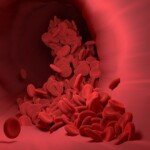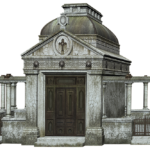Navigation Accuracy: How Advanced CNC Inspection Improves Your Manufacturing Process
In today’s competitive manufacturing landscape, precision is more than just a good choice. This is the absolute bedrock of quality, performance and reliability. From life-saving medical implants and sophisticated aerospace components to powerful automotive systems, the wrong margins disappeared. This is where CNC processing is done. However, even the most advanced CNC machines can only be as good as their verification process. This is a key role for CNC inspections – a rigorous technologically advanced approach that ensures that every part of the store floor meets strict specifications every time it leaves. Ignoring this step is like building a complex architecture without using levels.
The importance of accurate non-negotiable
We have gone beyond simple tolerance bands. Modern applications require microscopic accuracy and repeatability. A small percentage of millimeters exceeding specifications can lead to catastrophic failure of mission-critical components, expensive recalls or rejection through downstream quality control. Accuracy impact:
- Performance: Parts must be perfectly integrated and functional in complex systems.
- Safety: Especially important in the aerospace, medical equipment and energy sectors.
- Durability: Accurate mating surfaces ensure life and reduce wear.
- Cost Efficiency: Minimize scrap, rework and warranty claims to protect your bottom line.
Beyond Machine: What is CNC Inspection?
CNC inspections are more than just checking on-site inspections. This is a comprehensive, integrated quality assurance process applied throughout the manufacturing life cycle:
- Definition criteria: The requirements for establishing accurate digital blueprints (CAD models) and geometric dimensions and tolerance (GD&T) are fundamental.
- Machine Setting Verification: Using tools like integrated probe systems Within The CNC computer itself (on-machine probing) to verify fixation, workpiece alignment and initial tool path forward All production begins.
- Process Check: Monitor key dimensions period Processing, usually using machine-mounted probes or non-contact sensors. This will encounter deviations early, and can be corrected immediately and prevented from defective parts.
- Act 1 Inspection (FAI): The rigorous, dimensional and functional analysis of the first part produces part of the verification process before proceeding.
- Final check: Comprehensive verification all Drawing and CAD model specifications, combining highly accurate technology.
A weapon library for high-tech inspection methods
Gone are the days when relying solely on calipers and microns for critical verification. Accurate CNC manufacturers (such as Greatlight) take advantage of complex technologies:
- Coordinated measuring machine (CMM): Gold standards for complex geometry and high critical measurements of GD&T elements (such as real position, flatness, contour). Modern CMMs use touch trigger probes or ultra-precise scan probes to map point clouds against nominal CAD models.
- Laser scanners and optical comparators: Generating high-density 3D point clouds is very fast and is ideal for examining composites, organic shapes, or performing surface finish analysis (usually integrated with CMM).
- Visual measurement system: Fast, highly accurate 2D measurements (holes, edges, modes) and increasingly advanced 3D inspections with high-resolution cameras and sophisticated software.
- Surface Roughness Tester: Quantifying the microscopic geometry of the processed surface is crucial to function (seal, friction, appearance).
- Laser tracker: For very large parts or components, long-term portability and measurement are required while maintaining high accuracy.
- On-board detection: Built in CNC computers, allowing automatic setup verification, tool rupture detection and closed-loop machining adjustment without the need to delete parts.
Check how to directly improve accuracy (and why it is important to you)
Integrating advanced inspections is not overhead; this is strategic:
- Defects were detected earlier: Process inspections prevent expensive production of large quantities of waste parts.
- Reduce human error: Automation minimizes inconsistencies introduced by manual measurements.
- Quantitative performance: Providing hard data proof consistency and quality is critical to certification and auditing.
- Drivers are constantly improving: The data determines the tendency of tool wear, machine drift, or process instability, resulting in proactive improvement.
- Enable complex parts: Complex geometry can only be verified by high-end machining (such as 5-axis work).
- Provide peace of mind: Provide absolute confidence that the received parts will be performed as expected.
5-axis advantage: precision of engraving from all angles
Greglight Loverages state-of-the-art Five-axis CNC machining As a core capability. Why does this technique work in concert with advanced inspection?
- Complex geometry mastery: 5-axis machining allows for the most complex contours and functions to be engraved in a single setup. However, validating these complex surfaces requires complex tools such as scanning CMMs or laser trackers.
- Top surface finish: Fewer settings usually translate to better surface quality, but checks to verify that it complies with specific RA/RZ parameters.
- Reduce setting errors: Complex parts often require complex fixation. Integrated into our 5-axis CNCs greatly improve setup accuracy forward Any metal is significantly cut.
- efficiency: Combining the 5-axis functionality of complex parts and integrated detection during the process can generate efficient flow, minimizing non-mitigation time and maximizing assurance.
Why you want to look good is your precise manufacturing partner
On Greatlight, precision is not a buzzword. It is embedded in our DNA and enabled by our resources:
- Cutting-edge technology: We invest in advanced Five-axis CNC machining center Able to cope with the most demanding geometry and the strongest alloys.
- Comprehensive inspection of the ecosystem: Our commitment goes beyond machines. We utilize integrated precision metering devices (CMM, laser scanning, vision systems, probes) to integrate into our workflow.
- Technical expertise: Our skilled engineers and mechanics not only know how to process a part, but how to measure it and ensure it is perfect, explain tolerances and a strict GD&T.
- A true one-stop solution: From expert CNC machining (prototyping to production) to meticulous post-processing (complete, heat treatment, color plating, painting) and thorough Inspection reportwe handle it all. You will get full parts, fully verified, direct shipping.
- Material Agility: We have skillfully processed many metals and plastics, customizing our methods based on material properties and inspection requirements.
- Value through precision: When offering competitive prices, we know that consistent delivery of spec parts is the ultimate value. Our inspection process saves you time, money and frustration.
Conclusion: Ensure accuracy, not wish
In a demanding world of precision manufacturing, hope is not a strategy. Implementing and verifying microscopic accuracy requires a deliberate combination of advanced CNC technologies, especially the flexibility of five-axis machining and a strict multi-stage inspection protocol. At Greatlight, we built the system from scratch. Our investment in state-of-the-art equipment for machining and metering, coupled with deep technical expertise, ensures that every component we offer meets your stringent standards, performance requirements and critical deadlines.
Don’t let accidental precision. Leverage advanced CNC inspection and the features of a true five-axis expert. Contact Greatlight for consultation now. Get quotes and experience the confidence that guarantees precise machining – deliver on time and deliver at the best value. Customize your precision parts now!
CNC inspection and precision machining FAQs
Q1: What stages usually happen during the manufacturing process?
A1: The entire inspection is always integrated: Setup verification (using machine probes), process inspection of key functions during machining, comprehensive first article inspection (FAI) of initial parts, and final inspection of parts completed with CMMS or other high-precision tools for all specifications.
Question 2: How to improve accuracy in five-axis machining compared to three-axis?
A2: Five-axis machining allows access to parts from almost any angle without multiple settings. This greatly reduces accumulated setup errors that inevitably occur when moving parts between fixtures, minimizing the risk of manual handling, often improving access to tools for better surface effects and achieving complex geometry on 3-axis machines. This inherent capability combined with inspection results in a continuous higher accuracy.
Q3: What kind of inspection report do you provide?
A3: We provide detailed digital inspection reports (such as dimension reports or first article inspection reports) that clearly show the measured values for your graph or CAD model specification. These reports usually include data points, charts, screenshots of CMM software, displaying geometry compared to nominal, and explicit pass/fail status. PDF format is standard and other formats are available upon request.
Q4: Apart from geometry, what else do you check?
A4: Our inspections include dimensional accuracy, geometric tolerance (GD&T), surface roughness/finish, material consistency (via MTRS), and visual surface defects. We can also perform functional tests if needed. Our one-stop finishing service means we take the quality of surface treatment for coatings, plating or any application as part of our final delivery.
Q5: My parts require very tight tolerances. Can Greatlight meet them?
A5: Absolute. Our combination of advanced five-axis CNC machining centers, calibrated high-precision metering equipment (including highly keen CMMS and scanners), strict process control, and skilled mechanics who specialize in precise work enables us to always maintain very tight tolerances (typically reaching ±0.001±0.001 ±0.001)" /0.025mm range or tighter depending on function and material). Please contact you on your specific request to confirm feasibility.

















